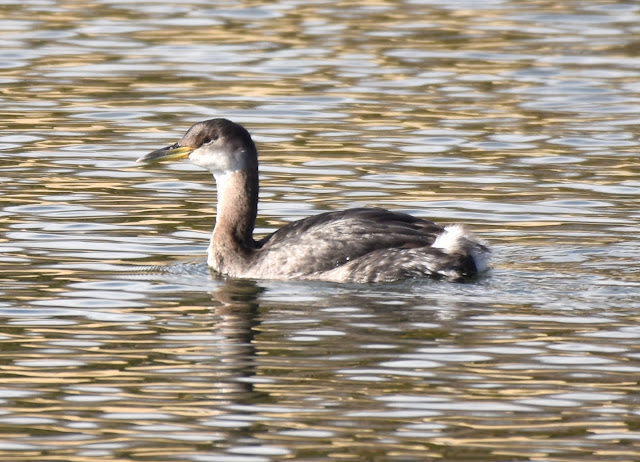The race to life at every level depends on disturbance and
response, never on equilibrium. Every cell and seed jostles for existence. Their
individuality evolves within a context that seems stable enough to be called a
system, a coherent accommodation of disturbances.
Relatively rapid disturbances from outside a system are termed
invasive. They upset our conservative consciousness unless, like each tilling
of a field or building of a home, we emphasize beneficial gains.
Given the scope and acceleration of man-made change, what is
the fate and value of native plant communities? Why, and how purely, should
they be defended?
 |
|
Queen Anne's Lace on
the Halibut Point shoreline |
Queen Anne's Lace, a non-native plant, has few detractors at
Halibut Point. It graces the landscape with lovely and fascinating features. It
takes hold in rugged terrain without appearing to be pushy. On the other hand
it shows more of a tendency to colonize freely the grasslands of Cape Cod to
the chagrin of nativist champions.
 |
|
Dandelion |
Dandelions, one of the most widespread plants introduced to
America in colonial times, have situated themselves as liberally around the
meadows of Halibut Point as they have Everyman's lawn. Yet they get a pass in The Invasive Plant Problem published on
the Massachusetts government website. Its author Dr. Paul Somers distinguishes
between being "weedy" and being "problematic in the more natural
surrounding landscapes"-- a provocative notion to the homeowner but a
thoughtful entry point to our topic.
Conversely, Black locust, Dame's rocket, and Yellow iris are
among the plants gaining only slight ground at Halibut Point that have been categorized
invasive by the Massachusetts Invasive Plant Advisory Group.
 |
|
Black locust tree in
flower on the quarry rim |
 |
|
Dame's rocket at
woodland edge |
 |
|
Yellow iris in
wetland |
Local conditions have not allowed them to spread beyond
toeholds in the Halibut Point landscape.
 |
|
Phragmites, the
Common reed, in meager quarters |
Phragmites grows aggressively anywhere it can get a start in
moist soil. It headlines any list of invasive plants but it too has garnered a limited
presence at Halibut Point. The thin stand pictured here has attained only dwarf
proportions in a damp swale by the seashore. It has achieved dominance in one
wet spot by the parking lot but hasn't encroached on the swamp across Granite
Street, perhaps shut out by the densely woven cattail root mass.
 |
|
Human industry on the
moors at Halibut Point |
Much of the windswept open space on Halibut Point originally
lacked enough soil to support agriculture or pasturage. Indigenous plants there
remained relatively undisturbed by human occupation and re-colonized the moors
after granite quarrying ceased.
 |
|
The native Rosa virginiana at home on thin soil |
Within this tangle of hardy shoreline creepers the Virginia
rose has succeeded over species less drought and salt-resistant.
 |
|
Rosa multiflora sprawling on old pasture land |
Exotic plant species find easier entry on the arable acres once
cleared for farming. Upland re-naturalization over the last eighty years has incorporated
a mix of novelties among the natives. Free-seeding Rosa multiflora that had been imported from Japan to stabilize
eroded American landscapes has established extensive thorny thickets. They are
opportunistic but not necessarily invasive in the sense of intruding on vulnerable
ecologies, since pre-existing systems had been eradicated. Much of the State
Park is progressing through successional stages toward a mature woodland that
will resemble but not replicate the original forest. There will be additions,
subtractions, and new proportions.
 |
|
The fruit of Oriental
bittersweet showcased on the old barn |
Many of the introduced plants had useful or attractive
features. In some cases their damnable vigor was part of their initial appeal.
 |
|
Bittersweet vine enmeshing
a cedar tree,along with poison ivy |
Oriental bittersweet's behavior turns thuggish as it
suppresses the innocent trees that it utilizes as scaffolds to sunlight.
 |
|
Catbrier blanketing
shrubbery |
But then native catbrier and grape similarly smother
anything they climb on, until ultimately shaded out themselves by the
light-excluding canopy of the maturing forest.
 |
|
Grape vine surmounting
a tree |
It's the instinctual way of natural increase, and it
characterizes recent centuries of human dominion on the land. Imagine
substituting the word 'cultures' for
'plants' in this statement on the
Mass.gov website: "Exotic, invasive plants
create severe environmental damage, invading open fields, forests, wetlands,
meadows, and backyards, and crowding out native plants." In the mirror of history Homo sapiens is the most invasive species of all.
Our enterprise has intentionally or inadvertently affected
all life on earth. The flora of Halibut Point is more diverse than ever as
newcomers have filtered in. But bio-diversity worldwide is declining as species
are driven to extinction. The consequences have ethical and practical dimensions.
 |
|
Purple loosestrife at
the edge of a cattail stand |
A few decades ago, as many people were enthralled by purple
loosestrife's vivid transformation of local wetlands, it dawned on close
observers that this escaped European species was dooming other parts of the ecosystem. Importation of beetles
that feed on loosestrife in their native lands has checked the invader to
non-threatening numbers apparently without collateral damage. This biological
re-balancing represents a success story in environmental intervention. The
preservation of wetlands has particularly active allies.
Part of the refreshment of wild spaces is that their
dynamics are not managed by human hands. Their internal aspirations and
tragedies proceed awesomely beyond our control, design, or prayers. The fittest
or luckiest survive in an incalculable web of neighborly invasions.
It seems unlikely that we could reverse the influx of non-native
plants in the public landscape even with the mobilization of Maoist level political
will. The plant communities will have to reach their own accommodations with
selective management for sanctuaries of special interest or rarity.


























































